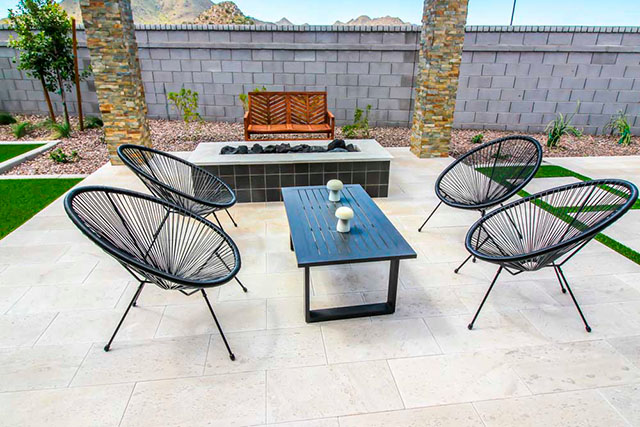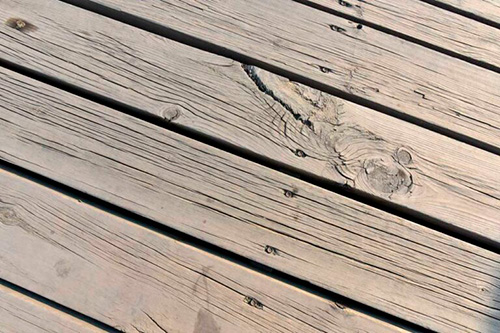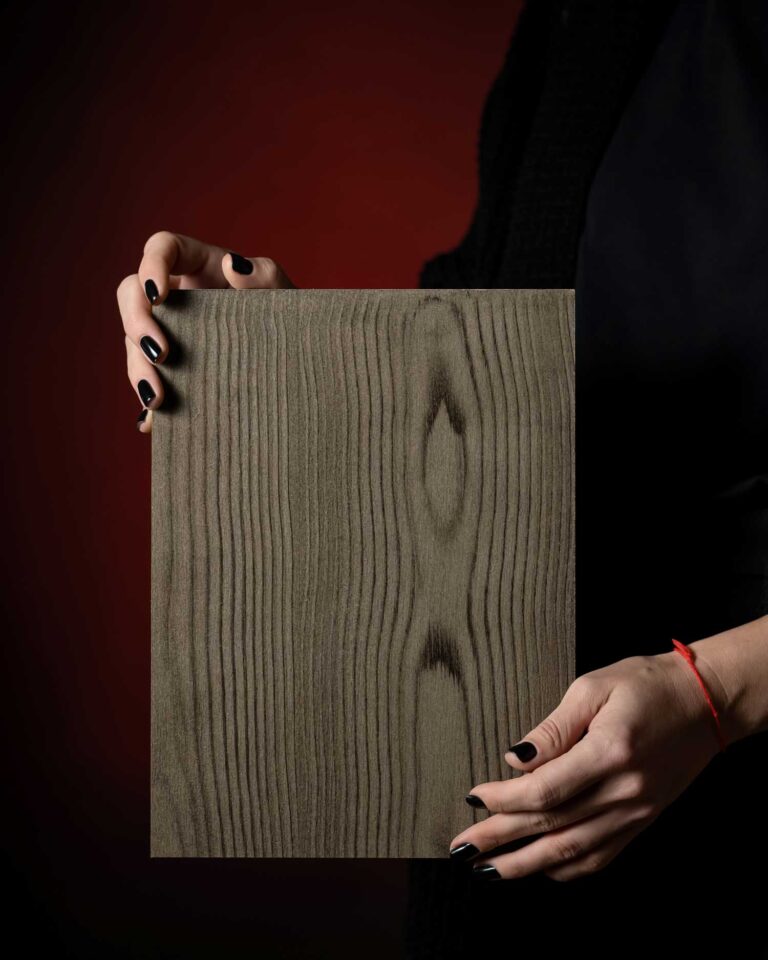When we ask ourselves what the best outdoor flooring for a patio or terrace is, the correct answer isn’t just one material. This answer involves design, formats, and the arrangement of the tiles, as long as we’re only referring to the world of ceramics. Let’s explore some material options for your patio tile installation.


Wooden Outdoor Pavements
Wood is a material that offers many possibilities when it comes to “dressing” your patio or terrace, but is it the best of the outdoor pavements?

Aesthetically, wood is a noble material that offers great versatility in terms of design and finishes. However, its care and cleaning must be very consistent. If not properly maintained, wood loses its properties and deteriorates visibly and drastically. With these drawbacks, ceramics gain more relevance as one of the best outdoor pavements. Let’s look at several characteristics that reinforce this:
Characteristics of Ceramic Tiles for Outdoor Pavements
Among all the ceramic tile options, we can opt for porcelain stoneware. We know that its porosity is very low, so it practically doesn’t absorb water, resists climatic impacts very well, and has high durability, as well as greater scratch resistance. Without forgetting its maintenance, it doesn’t require protectors, and its cleaning is very simple.
Thickness
The thicker the tile, the more resistant the ceramic will be. The average thickness of an outdoor tile is 10mm; however, there are pavements up to 20mm thick that are easy to install and don’t require adhesives or joints. They can be placed directly on surfaces like cement, gravel, or grass, and even create an elevated path over the ground. This quick and practical elevated floor installation also allows for hiding cables and pipes underneath, thanks to the space created below
Non-Slip
Choosing non-slip outdoor pavements becomes a mandatory feature in walkable terraces or patios.
There are many types of non-slip materials, from the roughest ones to those using a structured finish to achieve this non-slip effect. Regardless of which you choose, in wet areas like pools or places where the sun doesn’t have direct access, you should use this type of material.
In areas where temperatures are low or there’s a risk of frost, we need to think about materials like extruded stoneware. This type of stoneware contains an internal metal that prevents the ceramic from freezing while also making it non-slip.
It has a very limited color palette and has the ability to generate a rustic appearance wherever it’s placed. They are especially delicate with stains since they are difficult to remove due to being a porous material.
The Format
We must keep in mind the space to be covered and use ceramics that adapt to this space. The larger the ceramic, the fewer joints we’ll have. Within the formats, we also have the option of having rectified materials. These are ceramics with 90-degree edges, and when installed, they provide a uniformity that traditional ceramics do not offer.

Examples of Materials for Outdoor Pavements
Porcelain
Porcelain stoneware for outdoor floors and cladding is the one that gathers the most technical advantages. These are the most resistant and durable tiles because they are made of compact paste. They are easy to maintain and clean.
Their price is also not very high, as there is a wide range of prices, almost equal to the variety of options available to us, both in formats and colors to use.
Wood-Look Tile
We’ve already learned some of the good and not-so-good characteristics of ceramics at the beginning of this post. With the same finish but without these problems, wood-effect tiles are the ideal solution if you like rustic terraces or those inspired by country houses.
Even if you consider yourself a classic, you should also know that these formats perfectly adapt to more modern wooden terraces.
One of the advantages of wood-look outdoor pavements is the warmth they bring, a chameleon-like decorative element capable of integrating and blending with the surroundings.
In the current market offering, we can find practically all the colors and tones of natural wood, but in ceramic tiles. They typically have dimensions of 120 x 25 – 150 x 25 – 180 x 30. Remember, we aim to imitate parquet, so the layout and placement will be the same as if we were installing natural wood.

Conclusion
We have now seen the characteristics and some examples of outdoor pavements for your patio or terrace.
Remember that each of them has a format and is made of a specific material, so we will have to use placement and cutting techniques adapted to those materials and dimensions.
Don’t skimp on proper bonding material. Ask your usual vendor, and they will advise you on the suitable option.


Post a comment